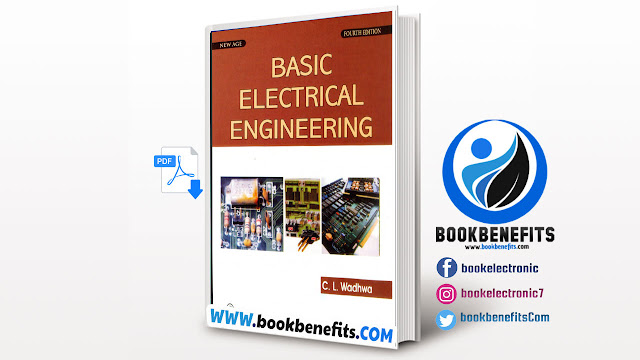Download Basic Electrical Engineering PDF
Basic Electrical Engineering PDF
Picture Of The Book :
About Of The Book :
Electrical Engineering has been written as a core course for all engineering students viz. Electronics and Communication, Computer Engineering, Civil, Mechanical Engineering, etc. With the advancement in technologies in almost all spheres of engineering, it is becoming difficult to provide more than one slot for interdisciplinary courses. However, the author feels that no engineering can work without electric energy. The basic input to all engineering is electric energy. A basic course in Electrical Engineering is almost essential for all engineering students. Keeping this compulsion in mind and also that this course will normally be offered at the first year level of engineering, the author has made a modest effort to give in a concise form various features of Electrical Engineering starting from simple ac circuits to Network theorems, measuring instruments, transformers, various de and ac machines including stepper motor. Various physical phenomena have been explained using simple language avoiding the rigors of mathematics. Chapter I deals with the steady state analysis of a.c. series and parallel circuits and series and parallel resonance. Chapter II describes various network theorems, star-delta transformation, and methods of mesh and nodal analysis for de networks. Balanced and unbalanced, three-phase circuits have been analyzed and methods of 3- phase power measurements have been discussed in Chapter III. Measuring instruments like, an ammeter, voltmeter, wattmeter, and energy meter have been described in chapter IV. The transformer is a very important electrical equipment. The construction, principle of operation, parameter calculations, efficiency, and regulation of transformer have been discussed in chapter V. Chapter VI deals with types of de machines, their operation and characteristics, efficiency and speed control, and application of these machines. Chapter VII deals with the construction, principle of operation, and applications of three-phase synchronous motors and stepper motors. Three-phase induction motors form at most 60 to 70% of the total load on the power system. These motors have been discussed in chapter VIII including types, construction, the principle of operation, methods of starting, torque-slip characteristic, application, and single phasing operation. Single-phase induction motors find wide application in Office and domestic appliances. The construction, principle of operation, and application of these motors have been described in chapter IX. Power systems are the most capital-intensive and the most complex system ever developed by man. Chapter X gives in brief, various supply and distribution systems and suggests methods for improvement of power factor.
Contents Of The Book :
DC CIRCUITS
ELECTROMAGNETIC INDUCTION
1 A.C. Cl RCU ITS
2 NETWORK THEORY
3 THREE PHASE SUPPLY
4 BASIC INSTRUMENTS
5 TRANSFORMER
6 D.C. MACHINES
7 THREE-PHASE SYNCHRONOUS MACHINES
8 THREE-PHASE INDUCTION MOTORS
9 SINGLE PHASE INDUCTION MOTORS
10 POWER SYSTEM
11 DOMESTIC WIRING
MULTIPLE CHOICE QUESTIONS
REFERENCE
Information Of The Book :
Title: Basic Electrical Engineering PDF
Language: English.
Size: 19 MB
Pages: 422
Year : 2007
Format: PDF
Author :

